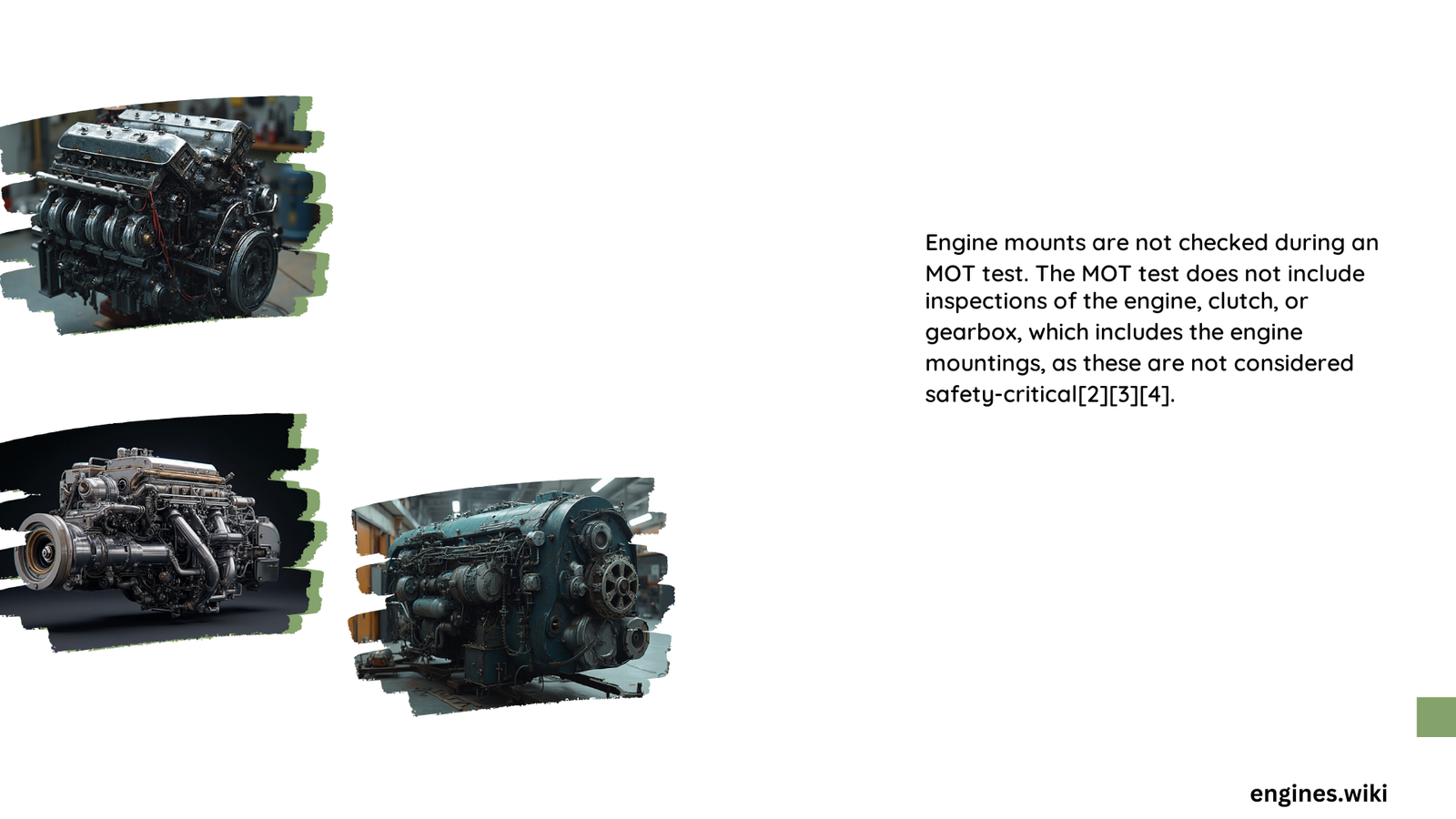During MOT tests, vehicle safety is paramount, and engine mounts play a critical role in ensuring vehicle structural integrity. Inspectors meticulously examine these crucial components to detect potential damage, excessive movement, or structural compromises that could impact overall vehicle performance and safety. The comprehensive inspection covers visual assessment, mount condition, and potential corrosion risks that might compromise the engine’s stability.
What Are Engine Mounts in Vehicle Safety?
Engine mounts are critical mechanical components that support and secure an engine within a vehicle’s chassis. They serve multiple essential functions:
- Vibration Absorption: Reduce engine vibrations transmitted to the vehicle’s body
- Structural Support: Maintain precise engine positioning
- Noise Reduction: Minimize mechanical noise during vehicle operation
How Do Inspectors Check Engine Mounts During MOT?
Inspectors follow a systematic approach to evaluate engine mount conditions:
- Visual Examination
- Check for visible physical damage
- Assess mounting bracket integrity
-
Identify signs of excessive wear
-
Movement Assessment
- Test for abnormal engine movement
- Evaluate mounting point stability
- Detect potential structural weaknesses
What Specific Criteria Determine Engine Mount Failure?
| Failure Criteria | Description | Potential Consequences |
|---|---|---|
| Severe Damage | Fractured or broken mounts | Compromised engine stability |
| Excessive Movement | Loose or worn mountings | Increased vibration and potential misalignment |
| Corrosion | Structural deterioration near mounting points | Potential structural failure |
Why Are Engine Mount Inspections Critical?

Engine mount inspections are crucial because they:
- Prevent potential catastrophic engine displacement
- Ensure optimal vehicle performance
- Minimize risk of additional mechanical damage
- Maintain overall vehicle safety standards
What Happens If Engine Mounts Fail MOT Inspection?
When engine mounts fail MOT inspection, vehicle owners must:
- Replace damaged or worn mounts
- Obtain professional mechanical assessment
- Rectify issues before vehicle can be certified
- Undergo re-inspection to confirm repairs
Technical Considerations for Engine Mount Replacement
Professional replacement requires:
- Precise manufacturer specifications
- Compatible mounting materials
- Proper torque and alignment techniques
- Professional diagnostic equipment
How Often Should Engine Mounts Be Checked?
Recommended inspection intervals:
- Annual MOT test
- Every 30,000-50,000 miles
- When experiencing unusual vehicle vibrations
- During routine maintenance checks
Cost and Maintenance Implications
Average engine mount replacement costs range between £150-£500, depending on:
- Vehicle make and model
- Number of mounts requiring replacement
- Labor complexity
- Specific mounting technology
Expert Recommendations
Vehicle owners should:
- Perform regular visual inspections
- Address unusual vibrations promptly
- Maintain consistent maintenance schedules
- Consult professional mechanics for comprehensive assessments
Conclusion
Engine mount inspections represent a critical aspect of vehicle safety during MOT tests. Understanding their importance helps vehicle owners maintain optimal performance and prevent potential mechanical failures.
Reference:
– MOT Test Guidelines
– Vehicle Safety Standards
– Automotive Maintenance Resources
